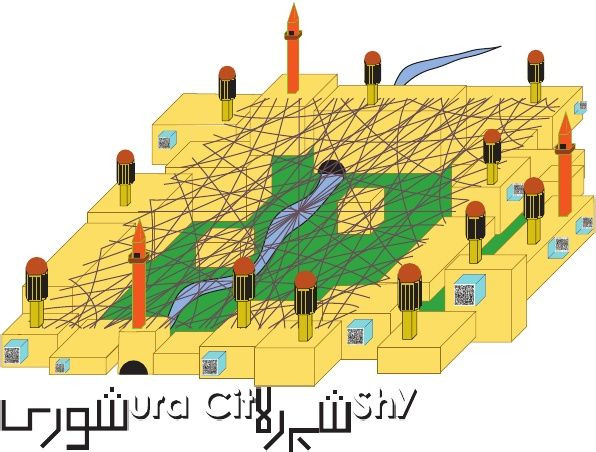Drone-Proof Cities: Artist Designs A City Where You Can Hide From Drones

If you’ve seen "Lord of The Rings" you probably remember the Battle of Helm's Deep, also known as the Battle of the Hornburg. The Hornburg was designed in the imagination of J.R.R. Tolkien to be an impenetrable fortress that could keep out any attacking army, including the advancing 10,000 strong Uruk-hai army you see in Peter Jackson film adaptation of the classic.
And it's this olden-day fictional example that best reflects that throughout human history, fiction or otherwise, cities have always been designed to match the prevailing threat of the day, whether it’s the medieval fortresses of Europe or the purpose-built fallout shelters of the Cold War that sprung up across the world in the middle of the last century.
But unlike Tolkien’s fictional Uruk-hai threat in his "Lord of the Rings" books, humanities most recent perceived threat, according to many, has become a reality: the rise of drone technology.
Conceptual artist and law student Asher J.Kohn has envisioned a community where drones will find it difficult to navigate and find people. His Shura City concept idea for “an architectural defense against drone warfare came from the realization that law had no response to drone warfare." His idea essentially stops people from being targeted.
Here are the features he thinks should be included in his drone-proof city.
Buildings -- Based on Habitat '67, architect Moshe Safdie's experimental housing complex in Montreal will have no consistent external layout, making it difficult to map the city and track residents' movements.
Smart Windows -- Made of multicolored glass, these windows will make it difficult to see in and easy to see out. They will also feature internal machines, which normally operate blinds, but could detonate if a scanning drone is detected nearby.
Uniform heat signature -- The shared roof over an internal courtyard will take advantage of modern heating and cooling systems to keep the whole city at a similar temperature, so that a distinct, personal heat signature can't be detected. Similarly, a latticework of shadows will blur lines between people moving during the day.
Towers -- The city will use multiple minarets to make it dangerous for drones to fly low overhead.
Windcatchers -- Passive cooling towers, windcatchers allow for electricity-free basement refrigeration, and again hide both heat signatures and human activity.
The rise of drone technology has been well documented over the last few years, whether it’s been the military drones used primarily in the Middle-East or the drones that Amazon.com, Inc. (NASDAQ:AMZN) propose will deliver packages to your door. At the moment, the price of drones can be prohibitive for many potential hobbyists, illegal for commercial use and even illegal in some states. However, it’s believed that once the FAA relax laws on drone use in 2015, there will be a steady influx that should see, the FAA predict, 20,000 to 30,000 in the skies by 2017.
© Copyright IBTimes 2024. All rights reserved.






















